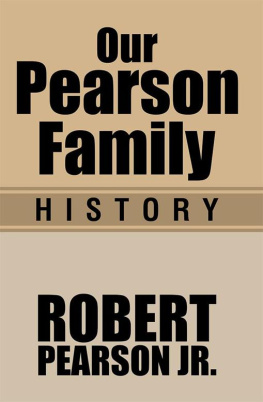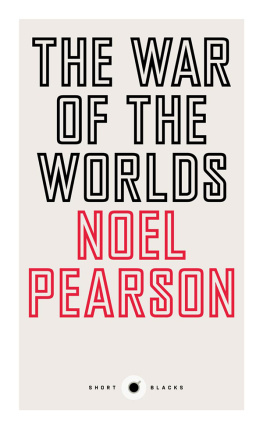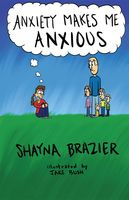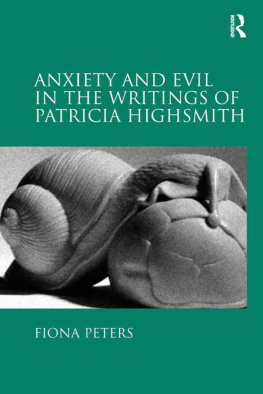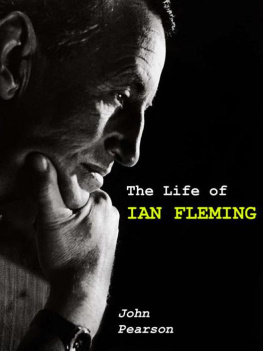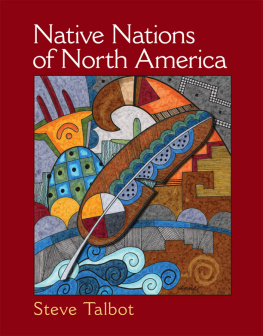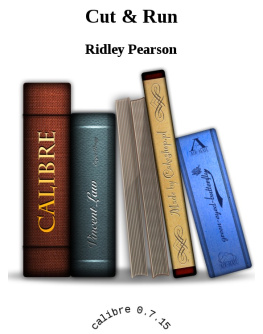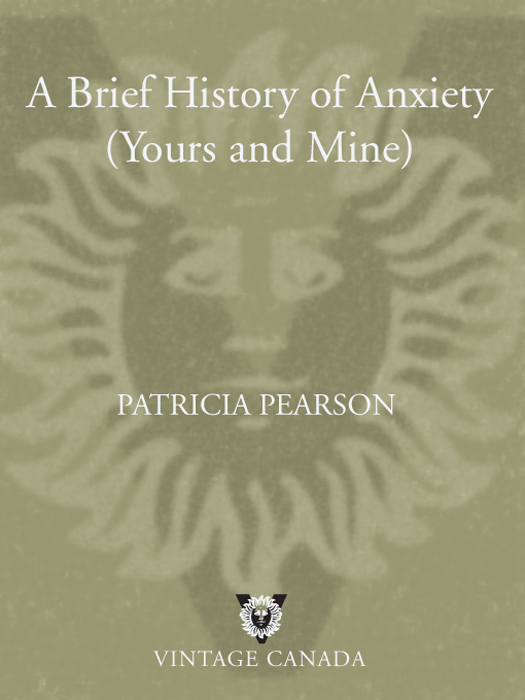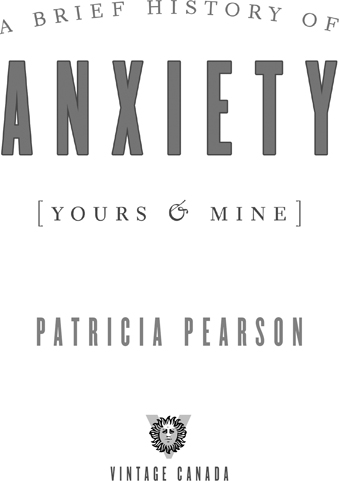Pearsons facility for humour keeps the laughter impulse always close at hand, even as were drawn deeper into some very dark places. A witty and insightful read.
A skilled mix of memoir and research.
A brave and edifying meditation on [anxiety] that weavesPearsons own story with the broader one of a condition that affects forty million North Americans in one way or another in a given yearfrom people with phobias and those prone to panic attacks to people with obsessive compulsive disorder or, like Pearson, generalized anxiety.
In her engaging writing style, Pearson intersperses vivid and entertainingly expressed accounts of her own anxiety, endured over a period of many years, with historical snippets and cross-cultural references.
Pearsons persuasive powers lie in her willingness to implicate herself. Neither psychiatrist nor historian, she plunks down her own insecurities and phobias and nervous breakdowns on the examination table and picks through them with the most precise instrument she has at her disposal: her own gimlet eye. She is a daredevil on the page; her prose somersaults and vaults, keeping the readers entertained by her wit and amazed by her dexterity as an investigative journalist.
This book is not another boring addiction-recovery memoir. Pearson is an excellent writer who knows exactly when to exploit the black humour and absurdity in this quite serious topic, then pull back and expound on the root causes of our national anxiety disorder.
Contents
7: Fear of Failure, Fear of Success:
Anxiety in the Workplace
1
Lets Roll
We foresee great peril if governments and societies do not take action now to render nuclear weapons obsolete and to prevent further climate change.
STEPHEN HAWKING, PHYSICIST AND MEMBER OF THE BULLETIN OF THE ATOMIC SCIENTISTS BOARD OF SPONSORS, 2007
I awoke morning after morning with a horrible dread at the pit of my stomach, and with a sense of the insecurity of life that I never knew before
WILLIAM JAMES, 1902
G IVEN MY DRUTHERS, I would prefer not to be afraid of the following: phone bills, ovarian cancer, black bears, climate change, walking on golf courses at night, being blundered into by winged insects; unseemly heights, running out of gas, having the mole on my back that I can feel, but not see, secretly morph into a malignant melanoma. Plus, flying. This is a big problem. Also, on occasion, the prospect that the supervolcano underlying Yosemite National Park will erupt and kill us all. Certainly, in addition, unexpected liver failure. And cows. Also, but only occasionally, when Im really over the edge with anxiety, the fear that the car Im driving will simply explode.
It is not that these fears arent inherently valid, because maybe they are. One must be vigilant. One must struggle continuously with the validity of ones fears. Yet they vex me because of what I do not fear: crime, bats, house fires, social censure, terrorism, breast cancer, trans fats, and any harm coming to my two small children.
Do I contradict myself? Very well then, I contradict myself, wrote Walt Whitman, that great American poet who was phobic of spiders. Apparently, I share this odd proclivity for contradiction with forty million adult Americans in any given year. That is an astonishing number. Nearly 20 percent of the adult inhabitants of the Land of the Brave are as anxious as I am, in one way or another, to a clinically significant degree. Phobic, some of them; others, prone to panic attacks; generalized anxiety, which is my label; somatic hysteria, posttraumatic stress disorder, obsessive compulsive disorderan array of thorny cloaks to wear.
I like to imagine themthese forty million kindred nervous soulsexperiencing the same juddering sense of alarm that I felt in January 2006 when I noticed that the U.S. Department of Health and Human Services had issued a bulletin about pandemic influenza. The warning went out via a newly dedicated Web site, pandemicflu.gov, advising the citizenry in all states to stockpile six to eight weeks worth of food and water like, nowish.
But why? I wondered, with detectable palpitations of the heart. Whats about to happen? A Google search suggested terrible things. Vast amounts of suffering and death. Rasping, blue-in-the-face plague along the lines of the Great Influenza of 1918. A brand new pandemic that would kill pretty much everyone in the prime of their lives more or less shortly (it wasnt precisely clear when). In the winter of 2006, the virus was still busy trying to figure out how to mutate in order to infect humans more swiftly than birds, but then well. Thats it. You understand? Calamity.
Therefore, proclaimed pandemicflu.gov, which I had stumbled across from a random link on the Drudge Report, you really, really need to stock cans of tuna and Evian water in the basement, because at the appointed time, the clerk at the 7-Eleven will drop dead and no one will sell you your food.
How do I, and forty million Americans, put this? When you suffer from anxiety, which has been very aptly described as fear in search of a cause, you do not need official encouragement. Go away with your stockpile advisory, because here is what it is going to make me do:
Patricia? ventured my husband about a month later, having signed for a postal delivery at our door. Are you all right?
Why? I called down distractedly from my third-floor home office.
Well, he said, coming upstairs, his even-tempered voice growing louder with each step, last week a box with twelve containers of freeze-dried vegetables arrived at the house from a company called Survival Acres, and I meant to ask you about it, you know, but I forgot, and now you seem to have purchased a really big tin of powdered butter.
He darkened the threshold of my office, displaying the newly delivered package. It says you need to add twenty-seven cups of water. My dear husband eyed me thoughtfully, poised somewhere between bursting out laughing and giving me a hug.
It is always thus. I catch him off guard. Ask anyone who suffers from what John Keats called wakeful anguish, and they will assure you that their affliction isnt visible to the naked eye. The chronically anxious arent physically timid, or cringing. We dont quake in our boots or whimper aloud as we board airplanes. In folklore and anecdote, the anxious have been conflated with the immature and emotionally uninhibited as nervous Nellies, but the perception is a prejudice. Our fears are private, arbitrary, idiosyncratic, and very often masked. Anxiety rages undetected in the mind, both secretive and wild.
Friends and acquaintances, children, even lovers can be fooled. Who knew that Charles Darwin was struggling to suppress a rising sense of panic in his later years? Who glimpsed the dread felt by Alfred Lord Tennyson, or by W. B. Yeats? Is a face-clutching terror evident in the bold joy of Aretha Franklin as she sings, or in the elegant play of David Beckham? Yet both contend all the time with a fraught sense of balancing on the cliffs edge. I know of one CEO who gets paralyzed with terror whenever he enters a tunnel, but I doubt his business associates have noticed this when theyve driven together in a limo from LaGuardia beneath the East River and into Manhattan. Another accomplished professional of my acquaintance spends her downtime silently making contingency plans for the tornado shes certain will hit her house in Montreal. One friend is a gregarious charmer, a man who soars at his job in Chicago, all the while governed by his phobia that something will snap off his toes.


